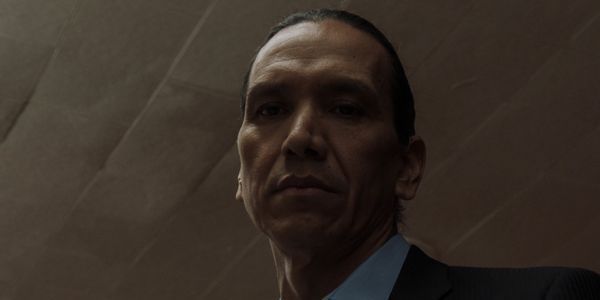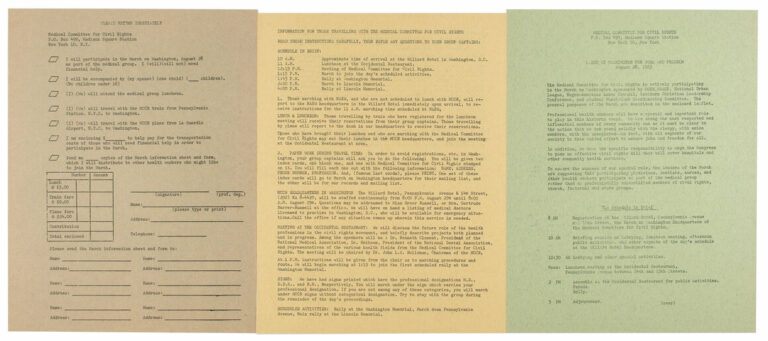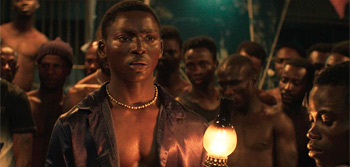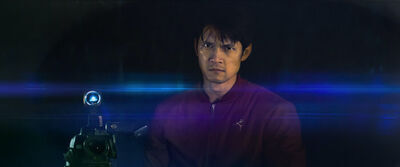Sundance 2021: Interview With Composer Gavin Brivik Of WILD INDIAN
The tension in Lyle Mitchell Corbine Jr.‘s Wild Indian is palpable to say the least, and the film’s illuminating score by Gavin Brivik helps cement the cinematic experience as one that is both dark and enthralling. Having started off his musical career as a guitarist, a wrist injury re-directed Brivik to music composition classes during his college years. This led him to eventually pursue studies in film scoring, and he has since found himself working steadily in the industry on a number of highly successful projects. This includes Netflix’s Living Documented documentary series, Cam and the Academy Award nominated short-film My Nephew Emmett. Brivik spoke with Film Inquiry about his involvement in Wild Indian during its premiere at the 2021 edition of the Sundance Film Festival.
Wilson Kwong of Film Inquiry: In addition to being a fan of music, can I assume that you were a cinephile growing up?
Gavin Brivik: Yes, my dad is a really huge cinephile. And when I was 13, I wanted to be a filmmaker for a little minute, but I was always a cinephile. I even had soundtrack CDs when I was in high school, and I used to have lots of favourite film composers. I just wasn’t confident in my own abilities to pursue it as a career until I studied it later on.
Were there specific film score composers that you looked up, or that ended up serving as an inspiration for you?
Gavin Brivik: I mean, my favourite film composer off the top of my head is Jonny Greenwood, who is probably just in general, one of my favourite composers because he writes really incredible concert music. He’s collaborated with another incredible Polish composer, Krzysztof Penderecki, and they did some really interesting work. And then I love Jon Brion who did Punch-Drunk Love and Eternal Sunshine of the Spotless Mind. I also love Oneohtrix Point Never (Daniel Lopatin), who scored Good Time and Uncut Gems. Mica Levi is another person who’s really creating new sounds. I just think that all of these composers and their process for scoring is very non-traditional, and I think that the movies they’re working on are also breaking bounds. I feel like they’re trying to forge a new path in such a dense and historically process-oriented composing style. All the predecessors have done it the same way, and now with technology, we can do things different and it’s making new sounds.

I definitely see that in Wild Indian, where I remember the soundtrack being really striking for a number of different reasons. But one of the reasons was that there’s a lot of soundtrack in this film. It’s one of those movies where there seems to be music more often than not. I assume that was pretty difficult to do? What was your in approach in terms of tackling the score for this movie?
Gavin Brivik: So initially we had less music, and sometimes we were just going back and forth, going like, “Do we need more music? Do we need less?” The initial process for this though was that the director, Lyle, sent me the script in 2018. He sent me the script and then I wrote 10 tracks or from just the words on the written page. And that’s how I got the job actually. When Lyle shot the movie, he was listening to the music that I had written, and then when he started editing the footage, he was using that as the temp score. And to be honest, that stuff didn’t stay in the movie and it didn’t really work too well, but it gave us a lot of ideas. That was our non-traditional way of approaching the score, which was really exciting because that’s the first time I’ve ever done that. But it’s hard because it is a really score-heavy film, and I feel like we wanted that to counterbalance the darkness of the film.
And just in terms of the transformation itself, what was the main difference between what you had in drafted initially from reading the script, to the final score we see in the film?
Gavin Brivik: I think a lot of the initial tracks were way darker. Our first instinct was to have this experimental, gritty, dark score. We were influenced by Trent Reznor and Atticus Ross‘ work from a lot of the David Fincher movies. We loved Jonny Greenwood’s work in You Were Never Really Here, and all these really moody scores. I think that stuff was really cool and we kept some of that in the film for moments, but when we took a step back, we realized that in order to be very empathetic for Makwa (the character in the film) and to really try to empathize with his decisions, we needed a more emotional score. And if it was dark the whole way through, it may have just been one tone. It just wasn’t as complex. The score would have just been very two-dimensional to me, and it would have just been doing exactly what we see on the screen. I think that the score needs to be the inner monologue, it needs to do something that’s not just exactly on the screen. Otherwise, it’s just telling the audience what to think.
Whenever people talk about the score of a film, they often comment on how some might force audiences to think or feel a certain way, while some don’t. I think your score for Wild Indian definitely falls in the latter, so what actually goes through your mind when you’re composing something? Are you trying to tap into a specific ambiance or emotion, or are you trying to consciously stay away from that?
Gavin Brivik: I mean, that’s actually something that’s definitely informed by the director. I would say that’s really important to discuss, but that being said, some directors are really open to interpretation. I think I’m always trying to find something that’s not on the screen. I think there’s always maybe a fourth dimension or another layer to the story that the score can add. So take for example in this film, there’s a scene in the first act where Makwa is on the schoolyard menacingly looking at James, the kid who he’s very envious of. So I think if there was a dark score there, it just fits his facial expression and it fits his anger and jealousy. But we are already seeing that he feels dark and he’s troubled, the actors are already telling us that. So is there another way that the score can sell something else, which is that Makwa feels emotionally neglected or that Makwa is carrying all this trauma from an abusive home life? I guess I’m looking for some other angle to heighten or create depth, so that’s usually how my process was.

That’s really interesting. Maybe we can talk about how the score was actually recorded. I could be wrong, but it sounds like there’s a mix of both synthesized instruments and orchestral instruments?
Gavin Brivik: It was hard, because obviously with the pandemic, we ended up recording a remote string orchestra in Bulgaria, of all places. One of my friends, he works for another composer who had this orchestral group, the Sofia Session Orchestra in Bulgaria. They do a lot of big Hollywood productions, including The Crown on Netflix. And I had a friend who had worked with them a lot, so he connected me and we got lucky because they were about to have a second lockdown and we were really nervous that we weren’t going to be able to record. But it’s a mixture of Sofia Session Orchestra and my songs from my own studio.
When it comes to movies about indigenous people, I feel like there’s a lot of discourse – and not necessarily criticism – about how these films tend to always show the darker side of indigenous history. And a film like Wild Indian definitely tackles some serious subject matter, and can be pretty dark as well. Were there any discussions that you had with Lyle about the broader context of indigenous films, and what this particular film would be like?
Gavin Brivik: It was definitely very organic. I think with all the historical aspects of indigenous film and portraying indigenous people, Lyle was very clear that we weren’t going to do that in the score. He didn’t want to use any instruments that would be culturally appropriate, so he didn’t want any drums, flutes, or appliances like mock-ups. But he has a few native tracks in there that are actually his cousin’s band. And there’s an ending credit track, and then there’s a scene where Teddo (another character in the film) is playing one of his cousin’s tracks through the car speakers. But those are source tracks, kind of diegetic music tracks. But as far as music goes, it was really just a character piece.
Since you’ve worked on both documentaries and narrative films, what’s the biggest difference between the scoring process?
Gavin Brivik: That’s a big question, and I’ll try to paraphrase. The thing with documentaries and non-fiction is that you have to know as a composer that this is very real. There’s no heightened sense of cinema, and there’s this subconscious thought that you’re in a mood. You can have a heightened sense of emotion, and you can get away with a little bit of film tricks. I think the score can still be a little bit bigger in the sense that you’re able to get away with it, but you couldn’t have like a Marvel score in a documentary. And maybe this depends on the documentary, but a lot of the times I feel like documentary music is a lot more subtle and sometimes almost sound-designed where it’s not always scoring every little microscopic moments. Sometimes, it’s laying down a mood and some of them are just a little motor, like a rhythm that carries you through a long conversation. There are obviously documentaries that are very heightened and sometimes want that type of a big score. And I think that the modern documentary filmmaker is always trying to blur the lines, but I would say in my experience, I usually am a lot more subtle and careful in documentaries. With narratives, I can come out a lot more with instruments and be a little bit more expressive.
Film Inquiry would like to thank Gavin Brivik for taking the time to speak with us!
Does content like this matter to you?
Become a Member and support film journalism. Unlock access to all of Film Inquiry`s great articles. Join a community of like-minded readers who are passionate about cinema – get access to our private members Network, give back to independent filmmakers, and more.
Join now!





